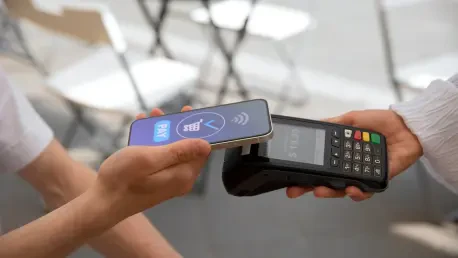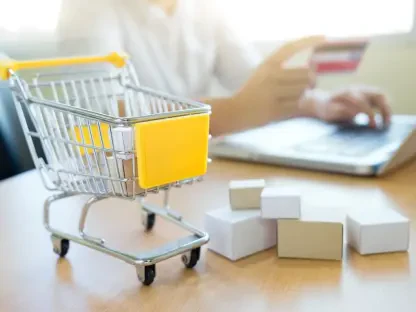In the rapidly evolving world of retail, bridging the gap between online and offline commerce is key. Zainab Hussain, an e-commerce strategist with rich experience in customer engagement and operations management, shares her expertise on how businesses can successfully integrate these platforms using solutions like Shopify POS. Let’s delve into her insights on the challenges and innovations redefining retail today.
Can you share your role and responsibilities at Shopify POS?
I lead the team responsible for advancing Shopify POS into a comprehensive system for physical retail. Our aim is to serve everyone, from small pop-ups to extensive retail networks, ensuring seamless integration.
What was your journey before joining Shopify?
Before Shopify, I built two e-commerce ventures. The first was PushLife, a mobile commerce solution acquired by Google. I joined Google and managed their mobile commerce products. Later, I created Ritual, a platform for social ordering in the hospitality sector.
How does Shopify serve both online and offline merchants in different countries?
We operate in over 170 countries, catering to almost every retail sector. Each industry has unique requirements, and our challenge is to provide a consistent yet flexible system that accommodates various needs, from coffee shops to furniture outlets.
What are some challenges or differences between online commerce workflows and in-person retail workflows?
Online processes tend to be standardized, involving product pages and checkout flows. In-person retail is more complex, as different sectors have distinctive workflows, like table management or appointment scheduling, which require tailor-made solutions.
How does Shopify POS cater to different retail verticals like coffee shops or furniture stores?
We understand that the retail needs of a café are vastly different from those of a furniture store. Our platform is highly adaptable, offering solutions tailored to each sector’s workflow, whether it’s managing tables or scheduling sessions.
Who are the core target customers for Shopify POS?
We primarily aim at sectors like apparel, jewelry, sports, and beauty. However, we also accommodate pet shops and novelty retailers, thanks to the flexibility and scalability of our platform.
How has Shopify POS evolved to support large retail chains with over 1,000 stores?
We’ve transitioned from supporting individual stores to meeting the demands of expansive chains. This shift required enhancing our system’s capacity to manage complex needs and ensuring it remains user-friendly for both small and massive operations.
Why was point-of-sale originally considered a lightweight add-on at Shopify?
Originally, POS was an extension of our e-commerce offerings. But as the retail landscape evolved, it became evident that a robust point-of-sale system was essential for holistic business management, prompting a reevaluation of its role in our ecosystem.
How does Shopify POS support direct-to-consumer brands engaging in offline sales?
We cater to “casual sellers” at events like pop-ups, facilitating their foray into offline sales. By providing tools that integrate seamlessly with their existing online operations, we help brands transition smoothly into physical spaces.
What are “casual sellers,” and how does Shopify POS assist them?
Casual sellers are individuals or brands testing offline sales through small-scale events. Shopify POS simplifies this transition by offering integrated inventory tools and real-time data syncing, allowing them to manage the offline aspect effortlessly.
How has contactless payment technology been integrated into Shopify POS?
Contactless payments are fully embedded in our POS system, providing not just payment solutions but also integrated inventory management and real-time synchronization between online and offline operations to minimize administrative friction.
What are the key backend complexities that Shopify POS manages for sellers?
Our platform streamlines backend processes like inventory management, fulfillment, and compliance, allowing sellers to concentrate on customer relationships rather than administrative tasks. This simplification is crucial for operational efficiency.
Can you explain the recent improvements like “mixed baskets” in Shopify POS?
The introduction of “mixed baskets” allows merchants to handle both in-store and shipping orders in a single transaction. This update, part of POS 10, significantly simplifies previously complex workflows and enhances the overall user experience.
How did the launch of POS 10 simplify complex workflows for merchants?
POS 10 achieved this by streamlining cart-building and search functionalities, making them faster and more intuitive. As a result, merchants can focus more on customer service rather than navigating cumbersome systems.
What updates have been made to the search functionality in Shopify POS?
We’ve incorporated fuzzy matching into our search feature, similar to Google Search. This upgrade allows more accurate and efficient searches within large inventories, greatly improving the usability of our system for employees, especially in stores with extensive product listings.
How does Shopify POS cater to temporary or seasonal staff in retail?
Our system is designed to be intuitive, reducing training time for temporary staff. Feedback from retailers confirms that new employees can orient themselves within a shift, allowing for adequate staffing during peak seasons without overwhelming training demands.
What is the integration status of Shopify POS with Shop Pay?
Shopify POS already integrates with Shop Pay at numerous retailers, streamlining the checkout process by leveraging stored customer data to enhance the in-store shopping experience.
How do you see the future of retail combining online convenience with in-store experiences?
Blending online and in-store experiences allows retailers to offer personalized, efficient shopping that meets customer expectations for both exploration and convenience. It’s about creating a cohesive journey that facilitates seamless transitions between the digital and physical realms.
Can you describe the potential benefits of linking online activity with in-store shopping?
By connecting online interactions with in-store activities, retailers can offer tailored experiences, such as having online cart items readily available in-store, thereby enhancing customer satisfaction and driving sales.
Where can people find more information about Shopify POS and connect with you?
You can explore more about our offerings at Shopify.com/pos. I’m also available on LinkedIn and X for any direct inquiries.








